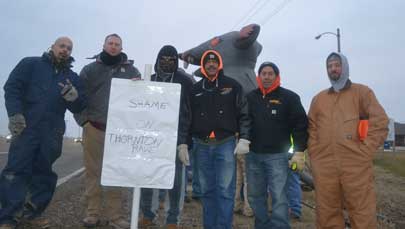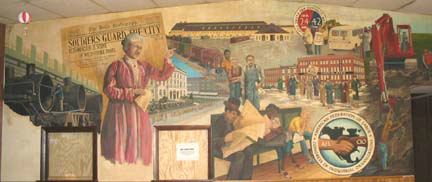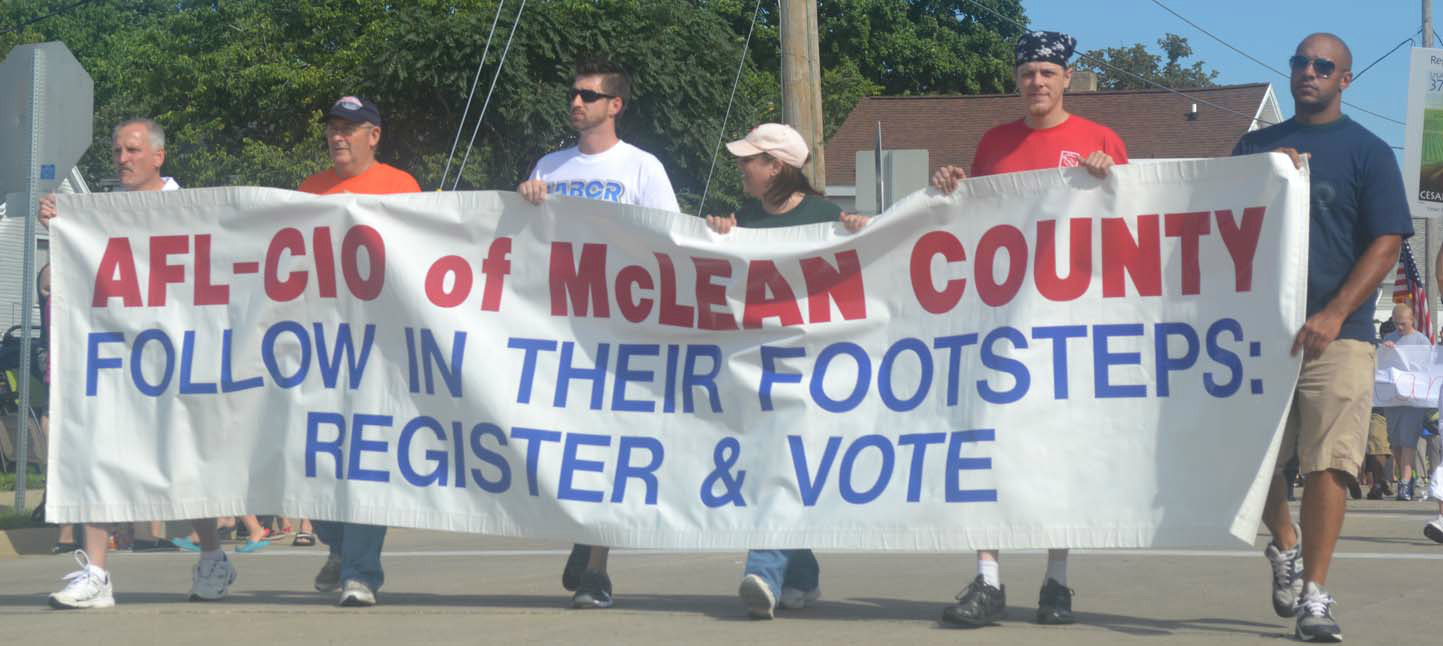
|
| Laborers 363 protest non-union construction by Thornton-Rave Steel Fabrication, Bloomington, Illinois, January 2015. |
|
Walking picket is no fun. It’s lonely to stand on a street corner, ignored by non-union workers and often called names we can’t print here.
Yet picketing is one of those age-old tactics that is still effective, an exercise in good ol’ American free speech and a very basic defense of union rights.
A picket is a public statement of a wrong. It puts not only workers, but also contractors, builders and the public on notice that something is not quite right.
This past winter has been busy for pickets in McLean County. Thorton-Rave Steel Fabrication is building a rebar facility in Normal non-union, despite the fact that one of the principal partners was a union member. This means not only picketing the job site, but also mass pickets to draw attention to this activity.
An old warehouse and a lumber yard were torn down in Bloomington with non-union contractors.
Often a union member gets discouraged when picketing. The line is crossed, workers continue to build and one can easily say, “what’s the use?”
Pickets are more than one-time events. They send a message to the community that union members are willing to stand up for their rights and publicly shame those who ignore local labor.
A particular contractor may continue to work non-union and finish the job. However, a picket can often halt delivery of materials or other services, forcing delays and expenses to the non-union contractor.
A picket also sends a larger message. A business owner, local politician or developer who drives by a union picket might think, “I don’t want that associated with my business.”
Then when that business or local government goes to build, they insure that union labor is on the job.
In that way, the picket might not turn around a non-union job today, but it is preventing a non-union job tomorrow.
When your union asks you to picket, don’t hesitate to volunteer. It might be frustrating and seem like a waste, but the job you are protesting today maybe the job you enjoy tomorrow.
The picket says that the union movement is alive and well and a force to be reckoned way. The union is willing to make a quiet but very public statement about union rights and workers’ willingness to stand up for themselves.
Picket line Recommendations
A good union member is extremely careful when confronted with a picket line situation. When a picket line is established on a job:
• the member leaves. He does not talk—just leaves.
• the member does not hang
around near the job.
• the member reads the picket sign as he or she leaves.
• the member knows that once a picket line is established, his business agents and other union officials are legally gagged. They can only tell him if the picket line is authorized.
• the member does not allow himself to be drawn into conversations with anyone at the job site.
• the member has the right not to work behind any picket line.
• the member has the right to decide for himself whether to walk off a job being picketed.
• the member understands that his trade may be under attack next.
• the member knows that a two-gate system means a picket line and he has the right not to work, no matter how many gates the employer sets up.



